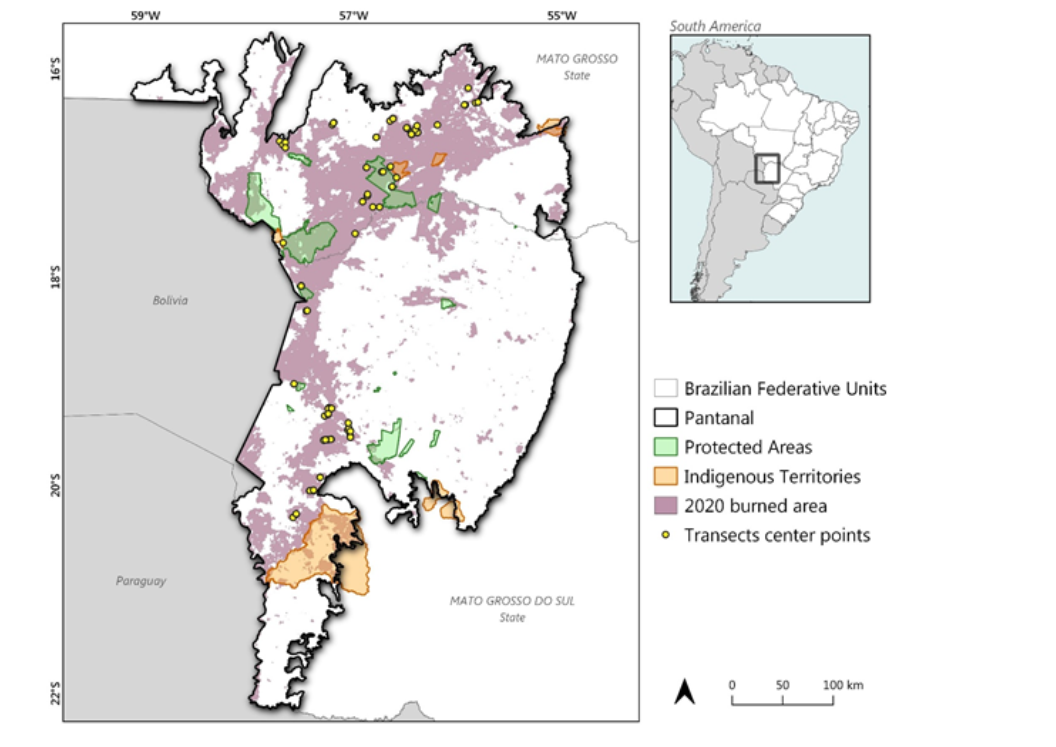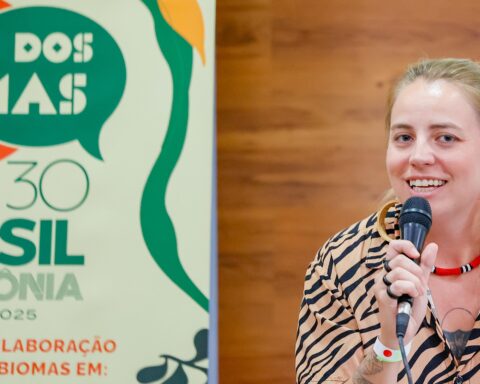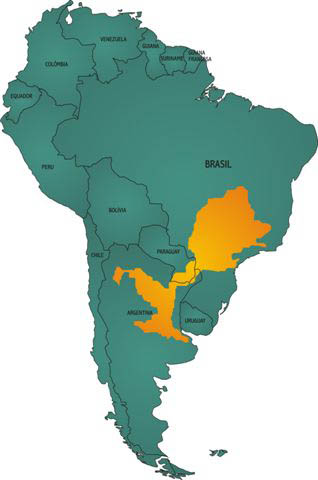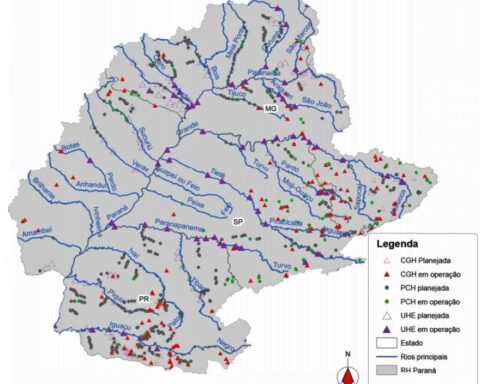O diretor científico da Ecoa, Rafael Chiaravalotti, é um dos autores do artigo “Distance sampling surveys reveal 17 million vertebrates directly killed by the 2020’s wildfires in the Pantanal, Brazil”, publicado na revista científica Scientific Reports, que leva ao público artigos nas áreas de ciências naturais, psicologia, medicina e engenharia.
O artigo revela que 17 milhões de vertebrados foram mortos pelos incêndios no Pantanal, em 2020, com base em dados coletados no campo que contaram carcaças 48 horas depois de incêndios – uma metodologia inovadora para o tipo de trabalho desenvolvido. Com esses dados, o objetivo é contribuir com o aumento do cuidado em relação ao meio ambiente, pela sociedade, levando-se em consideração o impacto de tais eventos na vida selvagem, assim como o entendimento de que o cenário das mudanças climáticas coloca para a humanidade talvez o maior desafio da história.
O estudo contextualiza os dados das mortes de vertebrados com informações a respeito também da seca no Pantanal, relacionando-a com mudanças climáticas causadas pela ação humana.
Segundo Chiaravalotti, “Esse artigo tem uma importância fundamental porque conseguimos mensurar o impacto do fogo no Pantanal. Conhecendo esse impacto, podemos estimar, no futuro, o que pode acontecer com as mudanças climáticas. Conseguimos provar o problema. Se fosse fazer uma comparação com doenças, é como se tivéssemos comprovado o quão grave é a doença.”.
Leia o resumo em inglês abaixo e acesse o artigo completo aqui.
Anthropogenic factors have significantly influenced the increasing frequency, duration, and intensity of meteorological drought in many regions of the globe1,2, challenging the sustainability of life on Earth. Extreme droughts caused by human-induced climate change have been pointed out as the global-scale determinant of the observed increasing wildfire occurrence3,4. In fact, during the last few years we have been witnessing an astonishing increase in intensity and frequency of wildfires, leading to a globally unprecedented amount of burnt area3,5,6.
However, the impacts of wildfire on wildlife are still poorly known, preventing our better understanding of the cumulative effects on the ecosystem functioning.
Besides the climate change implications for the wildfire increased frequency, many ongoing drivers at regional scales are to blame as well, including short to long-term anthropogenic activities such as deforestation, incorrect ignition and use of fire, absence of or inadequate landscape management strategies, vegetation encroachment, increased need of fire as management tool, and release of greenhouse gases which, in turn, contributes to climate change7–12. In fact, during the last few years we have been witnessing an astonishing increase in intensity and frequency of wildfires, leading to a globally unprecedented amount of burnt area3,5,6.
Seasonal wet-dry ecosystems, such as wet savannas, are particularly vulnerable to burning due to the higher vegetational load sustained by flood-induced fertility that makes these areas susceptible to burning during dry season6,13,14. Recently, among the most dramatic wildfire events, stands out the recorded widespread burning that hit the 170,000 km2 Pantanal wetland, in the center of South America, which may be characterized as an extreme wildfire event (EWE)15. While fires burned 16,210 km2 of the Brazilian portion of the Pantanal in 2019, astonishing 39,030 km2 burned in 202016.The large quantities of organic matter accumulated in lower, long-lasting flood areas covered by dense aquatic plant communities and floating mats, as well as in the open grasslands subjected to vegetation encroachment, created the scenario for the catastrophic 2020 wildfire in the Pantanal17,18.
The scenarios of climate change for the Pantanal region indicate decrease in the amount of rainfall, higher temperatures, and higher frequency of extreme climate events19. Fire is an evolutionary driver that shapes landscapes, biodiversity, human behavior, and the dynamics of socio-ecological systems worldwide20,21, and a natural and important component in savanna ecosystems worldwide22,23. Among these savannas, the Brazilian Cerrado and Pantanal wetland have been influenced by fire since before human arrival24,25, and are considered firedependent ecosystems20. However, we still need a better understanding of the impact caused by wildfires on the ecological functions and ecosystem services provided by wildlife. Additionally, this understanding is relevant for the process of sensitization of landowners, decision-makers, and the whole society towards the necessity of an integrated fire management strategy for the region.
The effects of fire on wildlife populations are generally classified as first-order (direct or immediate), secondorder (indirect), and evolutionary effects from fire history26,27. Experiences on estimating impacts of large-scale wildfire on wildlife are still scarce, and often do not separate mortality from other outcomes from this type of disturbance. Usually, estimates have been assessed based on known population densities or estimated biomass, depending on the available knowledge on specific species or species groups28–30. Although these assessments may be considered valid attempts of estimating the number of animals killed by fire, they are not based on direct
carcass counts.
This paper focuses on estimating the deaths among vertebrates directly caused by wildfires, based on data collected in the field by accounting for carcasses up to 48 h after fire events in the Pantanal wetland, Brazil. With this report we want to contribute to the increase of awareness in society regarding the impact of such events on wildlife, as the scenario of climate change poses to humanity perhaps its major challenge in history. The estimates we present, besides its direct accounting in the field, may help to evaluate the potential cumulative impact of eventually repeated wildfires in ecosystems, as this is a plausible scenario posed by climate change.








